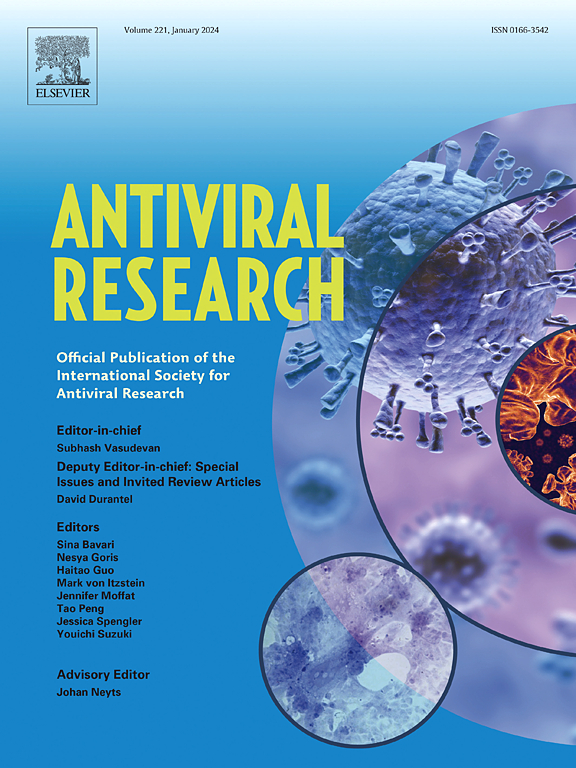评估年轻慢性乙型肝炎患者开始抗病毒治疗的显著肝损害:APLB评分
IF 4.5
2区 医学
Q1 PHARMACOLOGY & PHARMACY
引用次数: 0
摘要
年龄≤30岁且谷丙转氨酶(ALT)水平正常(40 U/L)的慢性乙型肝炎(CHB)患者是否应该接受抗病毒治疗存在争议。在本研究中,我们旨在确定显著肝损害(SHD)的高危因素,并建立一个评分系统来指导给予抗病毒治疗的决策。回顾性筛选接受肝活检的符合条件的患者,并随机分配到训练组或验证组。采用Scheuer评分系统评估肝纤维化(S0-4)和炎症(G0-4)。采用单变量和多变量logistic回归分析确定与SHD相关的独立危险因素(≥G2/S2),并基于这些因素建立新的评分体系。在883例入组患者中,548例(62.1%)为男性,250例(28.5%)为SHD。ALT、血小板计数、HBV DNA和肝脏硬度测量被确定为独立的危险因素。基于这些因素,提出了一种新的评分模型,称为APLB。APLB曲线下面积为0.731(95%可信区间0.695 ~ 0.764),显著高于天冬氨酸转氨酶与血小板比值指数(APRI)和纤维化-4指数(FIB-4)。APLB评分为6分,排除SHD的敏感性为80.2%,而诊断SHD的评分为12分,特异性为97.5%。综上所述,与APRI和FIB-4指数相比,APLB评分模型具有更好的诊断性能,并有可能指导该患者组启动抗病毒治疗的决策。本文章由计算机程序翻译,如有差异,请以英文原文为准。
Assessment of significant hepatic damage in young patients with chronic hepatitis B to initiate the antiviral treatment: The APLB score
Whether patients aged ≤30 years with chronic hepatitis B (CHB) and normal alanine transaminase (ALT) levels (<40 U/L) should receive antiviral therapy is controversial. In this study, we aimed to identify high-risk factors of significant hepatic damage (SHD) and established a scoring system to guide the decision to administer antiviral treatment. Eligible patients who underwent a liver biopsy were retrospectively screened and randomly assigned to either a training or validation set. Hepatic fibrosis (S0-4) and inflammation (G0-4) were assessed using the Scheuer scoring system. The independent risk factors associated with SHD (≥G2/S2) were identified using univariable and multivariable logistic regression analyses, and a new scoring system based on these factors was established. Among the 883 enrolled patients, 548 (62.1 %) were male, and 250 (28.5 %) presented with SHD. ALT, platelet count, HBV DNA, and liver stiffness measurement were identified as independent risk factors. A new scoring model based on these factors, named APLB, was developed. The area under the curve of APLB was 0.731 (95 % confidence interval, 0.695–0.764), which was significantly higher than those of the aspartate aminotransferase-to-platelet ratio index (APRI) and fibrosis-4 (FIB-4) index. An APLB score <6 points ruled out SHD with 80.2 % sensitivity, while scores >12 points diagnosed SHD with 97.5 % specificity. In conclusion, the APLB scoring model demonstrated superior diagnostic performance compared with the APRI and the FIB-4 index, and it has the potential to guide the decision to initiate antiviral therapy in this patient group.
求助全文
通过发布文献求助,成功后即可免费获取论文全文。
去求助
来源期刊

Antiviral research
医学-病毒学
CiteScore
17.10
自引率
3.90%
发文量
157
审稿时长
34 days
期刊介绍:
Antiviral Research is a journal that focuses on various aspects of controlling viral infections in both humans and animals. It is a platform for publishing research reports, short communications, review articles, and commentaries. The journal covers a wide range of topics including antiviral drugs, antibodies, and host-response modifiers. These topics encompass their synthesis, in vitro and in vivo testing, as well as mechanisms of action. Additionally, the journal also publishes studies on the development of new or improved vaccines against viral infections in humans. It delves into assessing the safety of drugs and vaccines, tracking the evolution of drug or vaccine-resistant viruses, and developing effective countermeasures. Another area of interest includes the identification and validation of new drug targets. The journal further explores laboratory animal models of viral diseases, investigates the pathogenesis of viral diseases, and examines the mechanisms by which viruses avoid host immune responses.
 求助内容:
求助内容: 应助结果提醒方式:
应助结果提醒方式:


